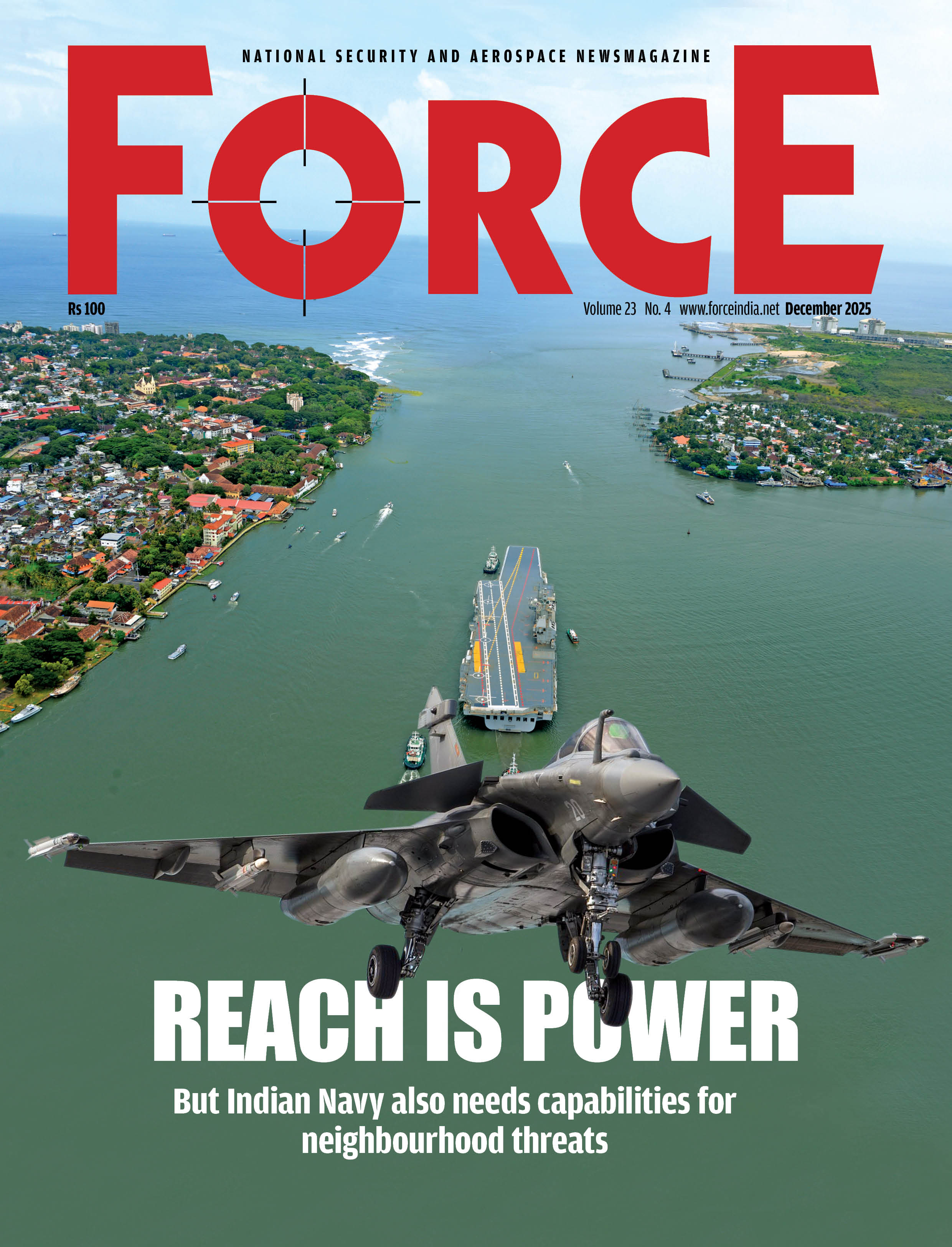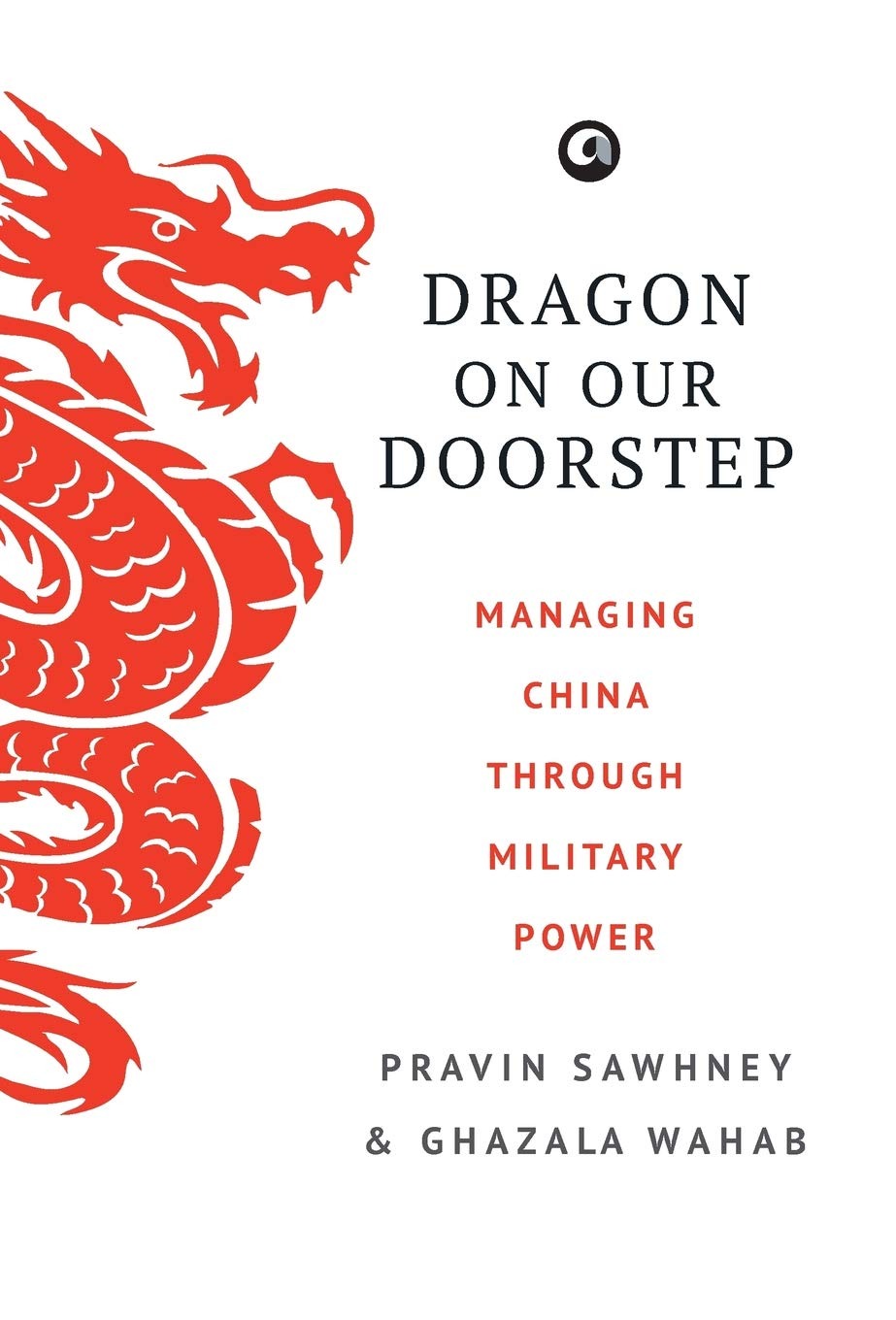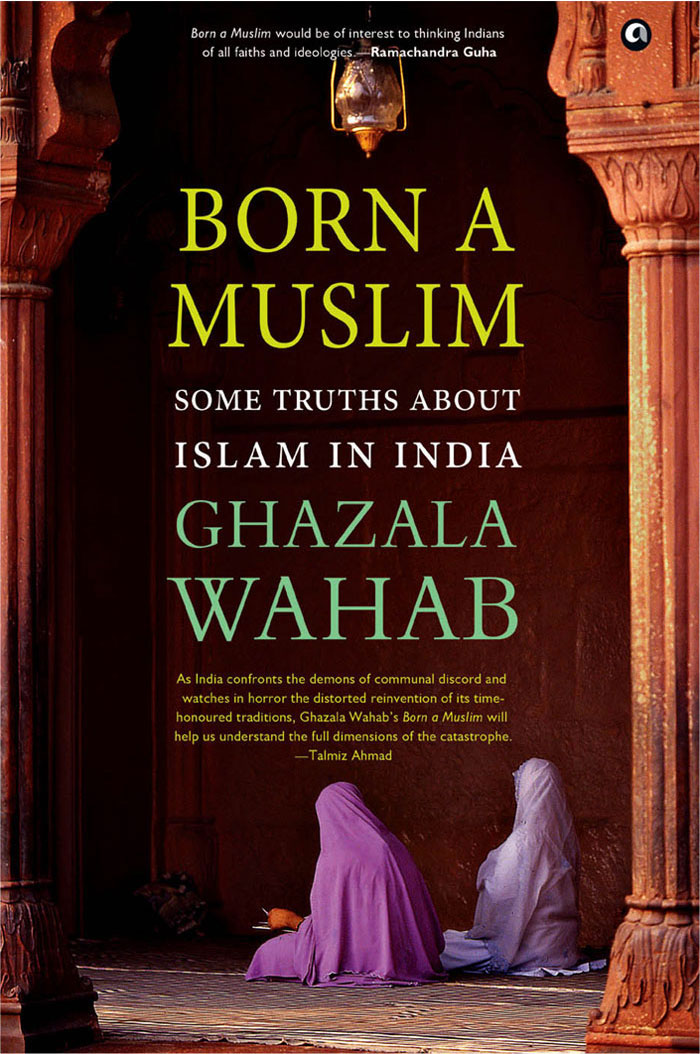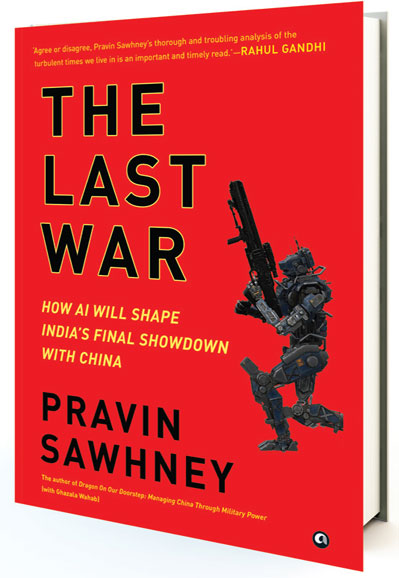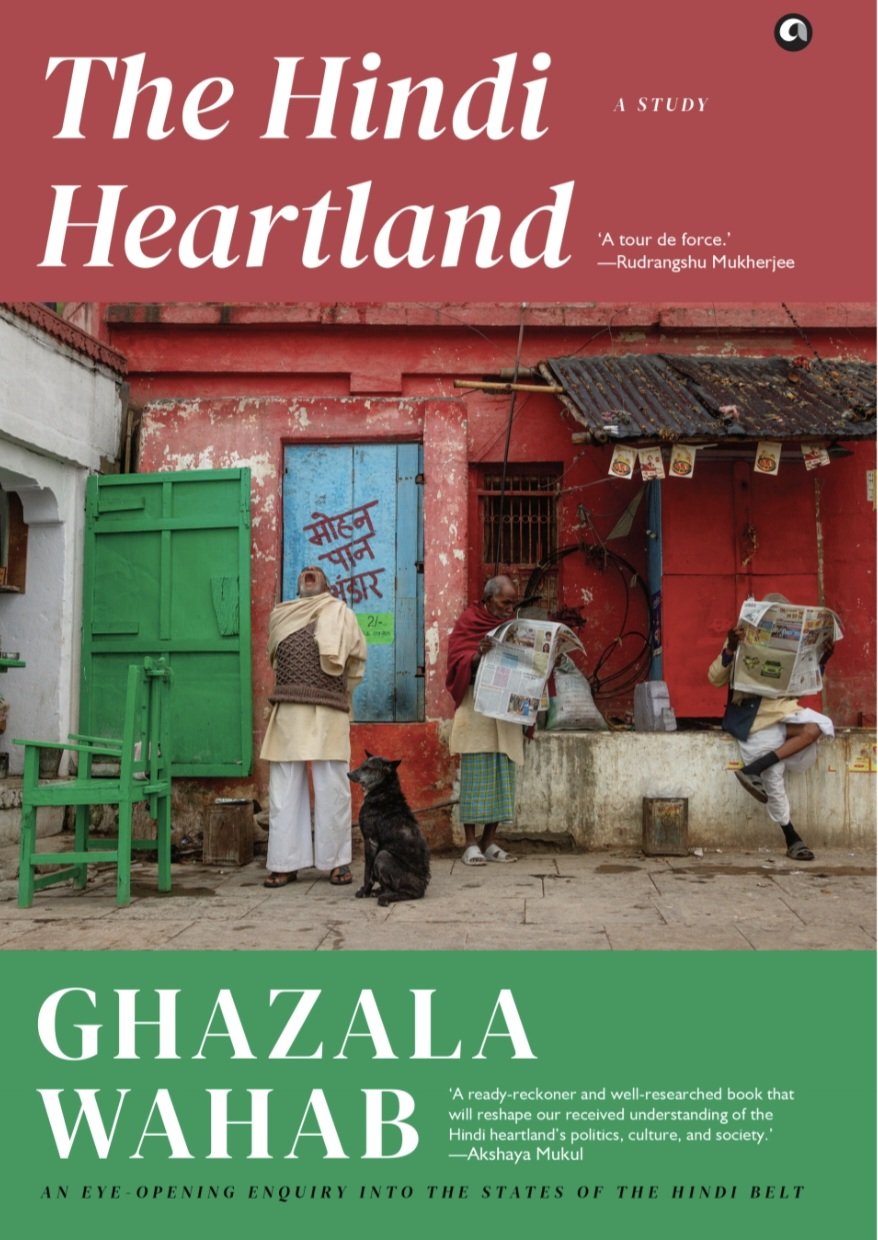Short, Sharp and Intense
Dr Amit Sharma
The trigger was brutal. A near-catastrophic, military-style terrorist assault on the Salal Dam in Reasi pushed New Delhi past the threshold. Within 72 hours, Nagrota-based 16 Corps of Northern Command unleashed its reply: Operation Baaz Shakti. The opening blows came in darkness.
Para (SF) detachments slid across irrigation ditches like phantoms, cutting Pakistan’s fibre-optic lines and laving hidden artillery pits for the salvos to come. On the black waters of the Chenab and the Nala Bhandar, MARCOS combat swimmers affixed mines to barrage piers and ferry points, choking crossings before dawn. Overhead, Indian Air Force (IAF) Garud operators lofted swarms of micro-UAVs, each one a digital hunter tagging armour hubs clustered around Kotla, Daulat Nagar, and Jalalpur Jattan near Gujrat. In the hills above Akhnoor, SFF Vikas detachments dug in on ridgelines, blocking flanking routes, while small teams pushed deep into the Pabbi forest along the N-5 highway, harassing troop movement between Mangla-Jhelum and Gujrat-Gujranwala.
The deception plan unfolded in parallel. 9 Corps of Western Command staged a diversionary assault towards Sialkot from RS Pura, tying Pakistani formations south of the Chenab. To the north, 15 Corps in Srinagar launched feint operations from Poonch and Naushera, pinning Pakistani brigades around Bhimber.
At 0345 hours, the sky tore open. Shaktibaan Brigade rocket groups—Pinaka, Vajra, and Smerch launchers—let fly salvoes guided by Para (SF) beacons. Pakistani gun lines lit up in fireballs as precision warheads tore through camouflaged pits. Bhairav assault battalions surged forward through lanes blasted clear of mines. Combat engineers ran with them, blowing bunds, laying portable bridges under fire. Pakistani infantry and Rangers resisted savagely; Al-Khalid tanks joined the counter-fire, mauling one Bhairav company. But AI-fused targeting shifted loitering munitions within minutes, IAF’s Su-30MKIs and rotary devils vectored and swooped onto the armour thrust, and the counterattack was crushed. Simultaneously, 25 Infantry Division struck Bhimber from Naushera in another diversionary tactics, locking Pakistani defenders in place.
By mid-morning, two breach corridors were open—Jalalpur Sobtian–Karinwala and Tanda. Through them thundered 15th Rudra Brigade, its light tanks and BMPs surging west, UAVs buzzing overhead, attack helicopters prowling the flanks. Pakistani artillery slammed the crossings and then came the Pakistan Air Force (PAF): F-16s and JF-17s screamed low, strafing, bombing, igniting a fuel dump. For a moment, the offensive wavered.
Then, India’s networked shield snapped into place. Airborne Warning and Control System (AWACS) vectored Su-30MKIs and Rafales into intercept. S-400 batteries in Punjab swatted high intruders; mobile Akash batteries engaged medium-altitude jets; Igla-S and Verba MANPADS along the canals brought down low flyers. PAF sorties scattered under the layered fire net. Within the hour, Indian retaliation came in waves—BrahMos cruise missiles smashing hardened shelters at Sargodha, Nirbhay missiles gutting fuel depots at Mianwali. Smoke rose from PAF tarmacs; the jets still flying were already half-broken.
With skies contested but survivable, Rudras pushed 40-50 kilometres into depth, seizing villages, while Shaktibaan salvos pounded Daulat Nagar, Jalalpur Jattan, Gujrat, and Kharian’s forward belts. Bhairav companies raided deep, harassing Pakistani regrouping points. The salient bled, but it lived.
Regular infantry and armoured started rolling behind them with divisional artillery providing cover. Engineers patched crossings under shellfire, infantry turned seized hamlets into fortress-nodes, artillery rings formed like steel halos around the wedge. Pakistani brigades counterattacked from Wazirabad—only to find the MARCOS had destroyed the Chenab bridge there, choking their movement before it began. PAF fighters returned in desperate bursts, but every sortie was met by India’s layered air defence and vectored interceptors.
Sustaining the wedge became the real war. Convoys from Jammu ran night and day, AI-tracked and re-tasked in real time. Drone trains ferried ammunition across canals, Army Aviation helicopters dropped fuel and rations into improvised landing zones (LZs), combat engineers rebuilt bridges as fast as Pakistani guns knocked them down. Medics triaged under fire, UAV CASEVAC pods flew bloodied stretchers out to field hospitals already overflowing but never collapsing. Pakistan’s artillery and raiding parties struck relentlessly, but India’s Network Centric War (NCW) grid anticipated moves, redirected convoys, and re-tasked fire missions within minutes.
Days of attrition followed. Indian drones and loitering munitions shredded convoys, dumps, and gun parks. Pakistani raids bled Indian engineers and convoys in return. Both sides paid heavily. Yet, the salient hardened: villages fortified into bastions, canal crossings multiplied, artillery pits dug deep and camouflaged.
By the end of the second week, India held firm on Gujarat’s approaches, pressing against the Wazirabad-Kharian artery. Pakistan had not closed the wedge; India had not broken deeper. The front froze into a grinding duel of stamina—guns, drones, convoys, and nerves.
But strategically, the fact of the salient itself was leverage. Proof that India could breach, thrust, shield, and sustain with networked precision. The scalpel of the Special Forces, the spear of the hybrids—Bhairavs, Rudras, Shaktibaans—, and the shield of the regular infantry-armour-artillery formations together defined the layered face of India’s new way of war.
.jpg)
Back to Reality
When the fictional Operation Baaz Shakti unfolded on the Akhnoor-Gujrat axis, its choreography of scalpel, spear, and shield looked nothing like India’s past campaigns. The scenario is, of course, speculative—but it draws heavily on real debates within India’s strategic community about how the army must fight its next war.
For decades, India’s ‘hot start’ template—sequential corps-sized pushes, heavily road-bound—moved too slowly and too predictably. As General V.K. Singh observed in his memoirs Courage and Conviction, about 1965 and 1971, ‘We always mobilized visibly, lumbered forward, and allowed Pakistan to shift reserves with interior lines.’ In short wars, from the three-week blitz of 1965 to the 10-day tempo on the western front in 1971, and even in the 2001-02 mobilisation, the clock favoured Pakistan.
Cold Start in the 2000s promised a cure: agile integrated battle groups capable of launching within 72-96 hours. But while the concept generated global debate, it never fully escaped paper. Budgets, politics, and international pressure meant that by 2010, the UPA government was officially denying its existence.
The deeper problem, however, was structural. India’s force architecture left a glaring void between two extremes: elite Special Forces on one side, and heavy divisional formations on the other. Special Forces—Para (SF), MARCOS, Garuds, SFF—were too often misused as elite infantry in conventional battles. In Sri Lanka (Indian Peace Keeping Force, 1987-90), Para and MARCOS detachments were thrown into attritional close quarter fighting they were not designed for. In Kargil (1999), Para (SF) companies were tasked to storm bunkers at 16,000 feet, roles better suited to regular infantry with artillery preparation. At other times, they were underused in low-intensity roles: counter-terror sweeps in Jammu and Kashmir (J&K), counter-insurgency in the Northeast, or highly publicised but limited surgical strikes (2016 across the Line of Control; 2019 in Balakot). As one retired SF officer quipped privately, “We trained to shape battlefields, but ended up kicking in doors.”
On the other side, conventional infantry and armour were too ponderous to exploit fleeting opportunities. As Brig. Gurmeet Kanwal (Centre for Land Warfare Studies) argued, “Our formations were designed to advance by the mile when the moment demanded thrusts by the minute.” The absence of a ‘middle tier’ left India repeatedly hamstrung: SF could open windows, but no fast, flexible follow-on existed before Pakistan mobilised reserves or international mediation froze the battlefield.
Since 2014, reform has been more tangible. The appointment of a Chief of Defence Staff (CDS) in 2020, the raising of Armed Forces Special Operations Division (AFSOD) for tri-service special operations, and experiments with Integrated Battle Groups (IBGs) marked what Lt Gen. D.S. Hooda in 2019 called a ‘Discovery process—figuring out in the field what PowerPoint couldn’t resolve.’ Yet, the real innovation now is the decision to raise three ‘in-between’ formations: Bhairav (light commando-breachers), Rudra (all-arms brigades with light tanks), and Shaktibaan (mobile precision rocket/ artillery).
As one senior official bluntly put it at the 2022 Army Doctrine Seminar: ‘The problem has always been the yawning gap between surgical SF raids and lumbering divisional pushes. We are designing a middle tier to collapse the window in which Pakistan can react.’
Equally important, India has embraced NCW—AI/ML-fused Intelligence, Surveillance and Reconnaisance (ISR), unmanned sustainment, and resilient battlefield communications. As the Joint Doctrine of the Indian Armed Forces 2018 already noted, ‘information dominance and decision superiority will be as decisive as fire and manoeuvre.’
This new triad now offers India a vocabulary of its own: the Scalpel of Special Forces to shape, the Spear of Bhairav-Rudra-Shaktibaan to breach and exploit, and the Shield of regular formations to consolidate and hold.
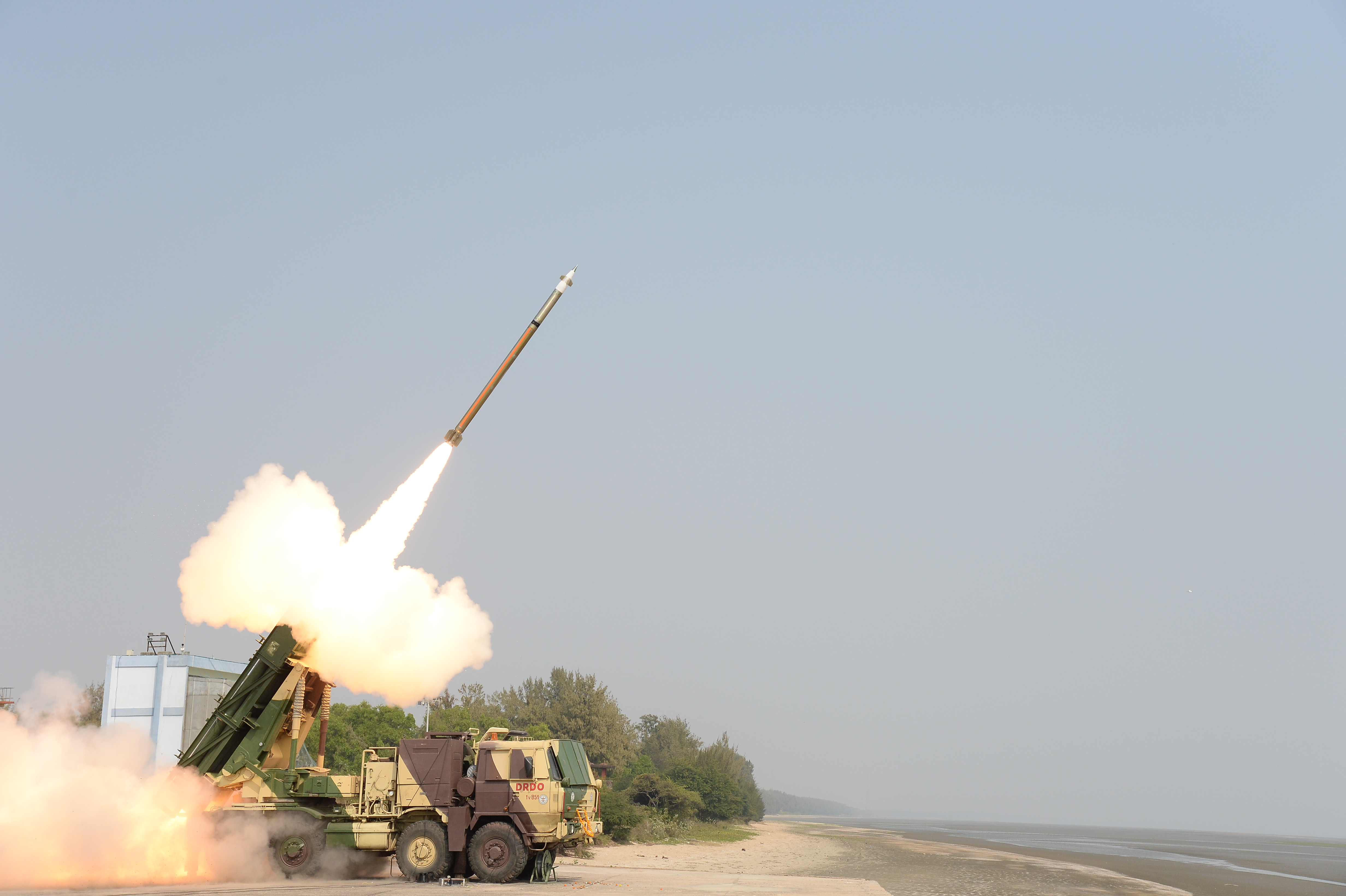
Why the Spear Matters
What India lacked for decades was tempo. In every major mobilisation—from the lumbering deployments of 1965 and 1971 to the aborted 2001-02 standoff—the sheer size of corps movements ceded time to Pakistan. Weeks were consumed in building up force, while Islamabad used interior lines to concentrate and the international community had time to apply pressure. The new Bhairav-Rudra-Shaktibaan triad is designed to collapse that timeline. In the fictional Operation Baaz Shakti, breach corridors were opened by dawn, Rudra thrusts were already 40-50 kilometres deep by evening, and outside powers had no time to intervene. Speed itself became a weapon.
This triad also restores doctrinal clarity to India’s force structure. For years, Special Forces—Para, MARCOS, Garud, and SFF—were misused as ‘elite infantry’ in counter-insurgency or attritional high-altitude assaults. The layered model frees them to return to their true role: shaping the battlefield, blinding enemy sensors, and conducting deep interdiction. It is the mid-layer that takes the brunt of the breaching and rapid exploitation—work too costly for scarce Special Forces and too demanding for lumbering heavy divisions.
The economy of force is equally critical. Shaktibaan’s precision salvos—Pinaka, Vajra, Smerch, augmented by loitering munitions—replace multiple IAF sorties at lower cost and far less risk. Rudra’s light tanks manoeuvre across canals and bund-lined plains where T-90s would bog down. Each breach lane saved by Bhairavs under the protective umbrella of precision fires buys hours of tempo—hours that, historically, India has always surrendered.
Overlaying all of this is a networked advantage India never had before. AI-enabled fusion nodes now knit together UAV feeds, SF laser beacons, SIGINT intercepts, and satellite passes into a single fire-control web. The sensor-to-shooter loop shrinks from hours to minutes. As Col Ajai Shukla noted in the wake of the Balakot airstrikes, “What India lacked in 2019 was an NCW backbone. What it is now building is precisely that”.
The result is not just sharper blows, but faster, cheaper, and more survivable ones. In a theatre where time has always been Pakistan’s ally, India’s new spear is designed to make time its own weapon.
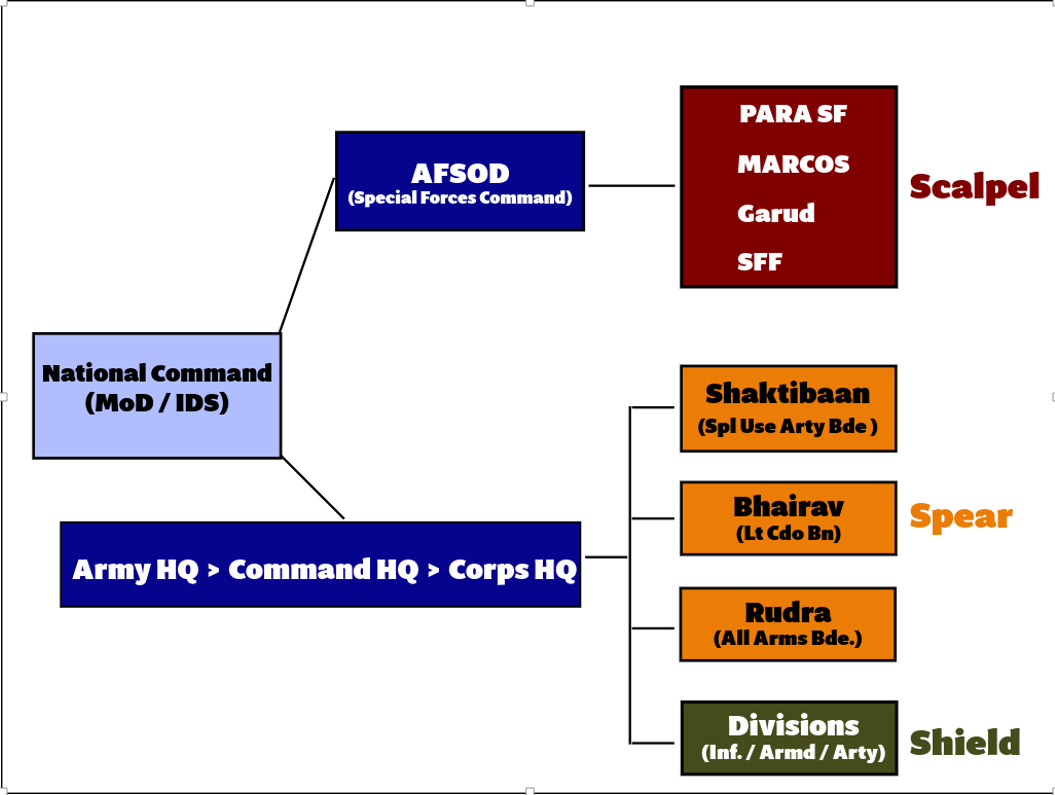
The 3S (Scalpel, Spear, Shield): India’s New Layered Warfighting Model
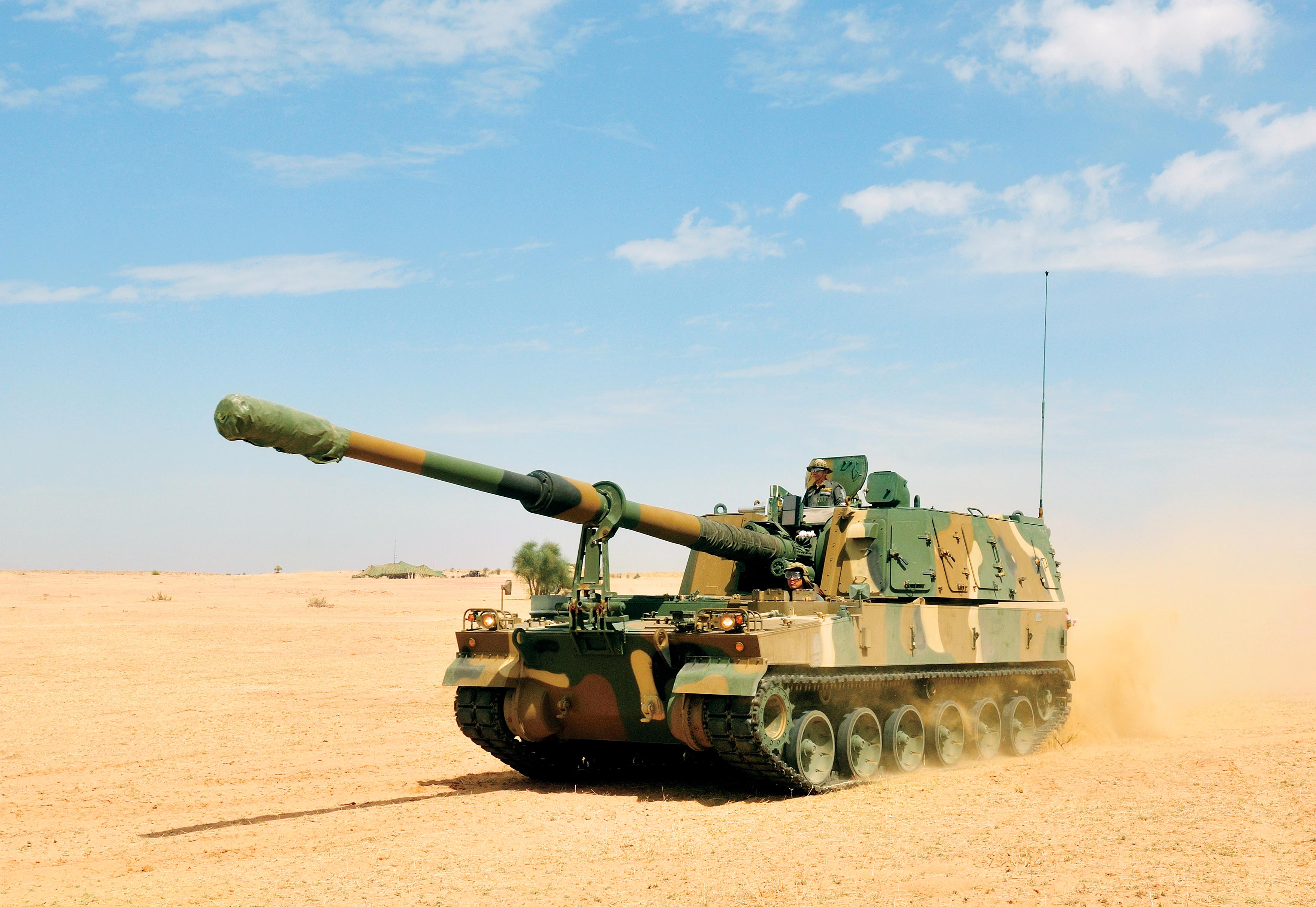
Tactical and Strategic Payoffs
On the battlefield, the advantages of India’s new layered grammar—scalpel, spear, and shield—are tangible and measurable.
The first is the assured breach. Bhairav battalions, moving shoulder-to-shoulder with combat engineers, open lanes under the precision umbrella of Shaktibaan rocket brigades. Their work is illuminated by Para and Garud detachments forward of the bunds, lasing targets and marking artillery pits. Within hours, minefields are stripped, bunds blown, and bridges thrown across irrigation canals. What once took days of bloody attrition is now compressed into a dawn’s work.
Once through, the operational spear drives in. Rudra all-arms brigades—light tanks, mechanised infantry, and organic aviation—exploit terrain that bogs down heavier armour. Unmanned Aerial Vehicles (UAV) squadrons scout ahead, while Rudra and Light Combat Helicopter (LCH) gunships hover low, destroying counterattacks before they cohere. The tempo is relentless: villages seized by noon, depth objectives pressed by evening.
Simultaneously, counter-battery dominance tilts the artillery duel in India’s favour. Shaktibaan’s shoot-and-scoot salvos, combined with loitering munitions and AI-enabled fire control, disperse and suppress Pakistani gun lines before they can mass. Counter-battery radars and electronic direction-finding triangulate hostile batteries within seconds, triggering precision strikes minutes later. Pakistani gunners are forced into a cycle of displacement and survival, unable to mount sustained barrages.
Above this, layered air denial creates survivable skies. Long-range S-400 systems hold PAF strike packages at risk from afar; Akash batteries cover the mid-altitude gaps; MANPADS teams stalk canal banks and ridge lines; and AWACS orbit overhead, vectoring Su-30s and Rafales onto intruders. The result is not absolute air supremacy, but a lethal bubble in which Indian spearheads can move and fight without being shredded from above.
Even sustainment has been reimagined. Unmanned logistics chains—drone convoys, amphibious Unmanned Ground Vehicles (UGVs), and quadrotor resupply flights—cut the risk of last-mile resupply under shellfire. Predictive AI models at Corps HQ forecast burn rates of fuel, shells, and medical supplies, dispatching replacements before shortages occur. CASEVAC pods slung under UAVs and Dhruv helicopters close the loop, ensuring wounded reach surgeons within the golden hour.
But the true force multiplier is Network-Centric Warfare (NCW) fused with Electronic Warfare. AI/ML fusion nodes stitch together every feed—UAV reconnaissance, satellite passes, SIGINT intercepts, SF beacons—into a single operational picture. This shrinks the sensor-to-shooter cycle from hours to minutes. Pakistani attempts to jam are met with frequency-hopping radios, mesh networks, and multiple redundant fire-control paths. Indian EW units blind enemy company radios, spoof GPS signals, and flood Pakistani nets with false traffic, while their own kill-chains remain resilient. The fog of war, once Pakistan’s ally, is systematically cleared.
Strategically, the model offers India an equally sharp edge. It gives Delhi credible, rapid-punishment options below the nuclear threshold—deterrence by denial and punishment without the paralysis of long mobilisations. It buys short-war leverage: as Kargil showed, international patience is measured in weeks, not months; rapid tempo creates a fait accompli before outside pressure freezes the battlefield. It allows Special Forces to be reallocated to their true deep-action and reconnaissance roles, instead of being wasted as elite infantry in attritional Counter Insurgency/Counter Terrorism (CI/CT). And finally, it generates political capital: a precise, networked salient—for example, one that presses against the Kharian–Wazirabad artery—translates into bargaining weight, as in the fictional scenario’s leverage over Siachen.
In sum, the payoff is not just tactical success, but strategic leverage. Precision, tempo, and endurance combine to turn the clock—once Pakistan’s greatest ally—into India’s sharpest weapon.
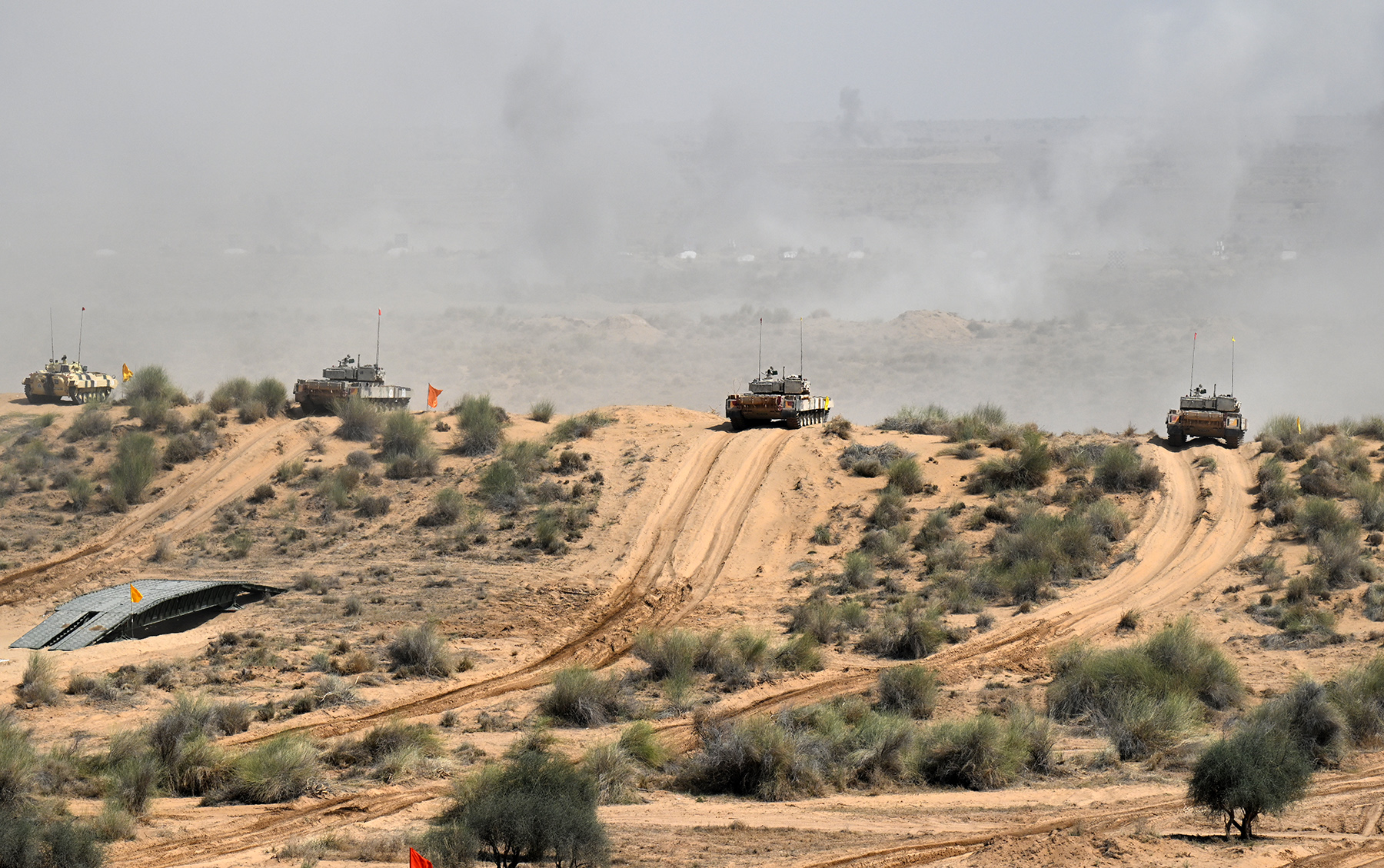
3S & Economics of War
The genius of the new grammar—Scalpel for Special Forces, Spear for Bhairav-Rudra-Shaktibaan, Shield for regular formations—lies not just in operational novelty but in how it rebalances the ‘economics of war.’
Cost per effect drops: Instead of committing strike aircraft or heavy divisions for every tactical aim, the Scalpel (Para, MARCOS, Garud, SFF) designates targets, the Spear (Bhairav/Rudra/Shaktibaan) delivers precision effects, and the Shield consolidates them. A Pakistani gun park once requiring multiple Su-30 sorties can now be blinded by SF beacons, shredded by Shaktibaan rockets, and denied by Rudra thrusts—all at lower cost, and with the heavy divisions preserved for weight of holding.
Decision cycles compress: In older campaigns, ‘pause and push’ was the norm: corps advanced, stalled, regrouped. In this model, the Scalpel feeds ISR (laser beacons, SIGINT, drone swarms) directly into AI fusion nodes, the Spear exploits breaches within hours, and the Shield anchors gains before Pakistan can reallocate. Recalibration is measured in hours, not days.
Survivability rises: Special Forces no longer linger dangerously in tactical infantry roles, as they did in Kargil or IPKF. Instead, they shape and exit, while the Spear absorbs the lethal opening blows with mobile, dispersed launchers, decoy pits, and loitering munitions. The Shield thickens positions over time, making counter-battery or counter-armour thrusts costlier for Pakistan with every passing hour.
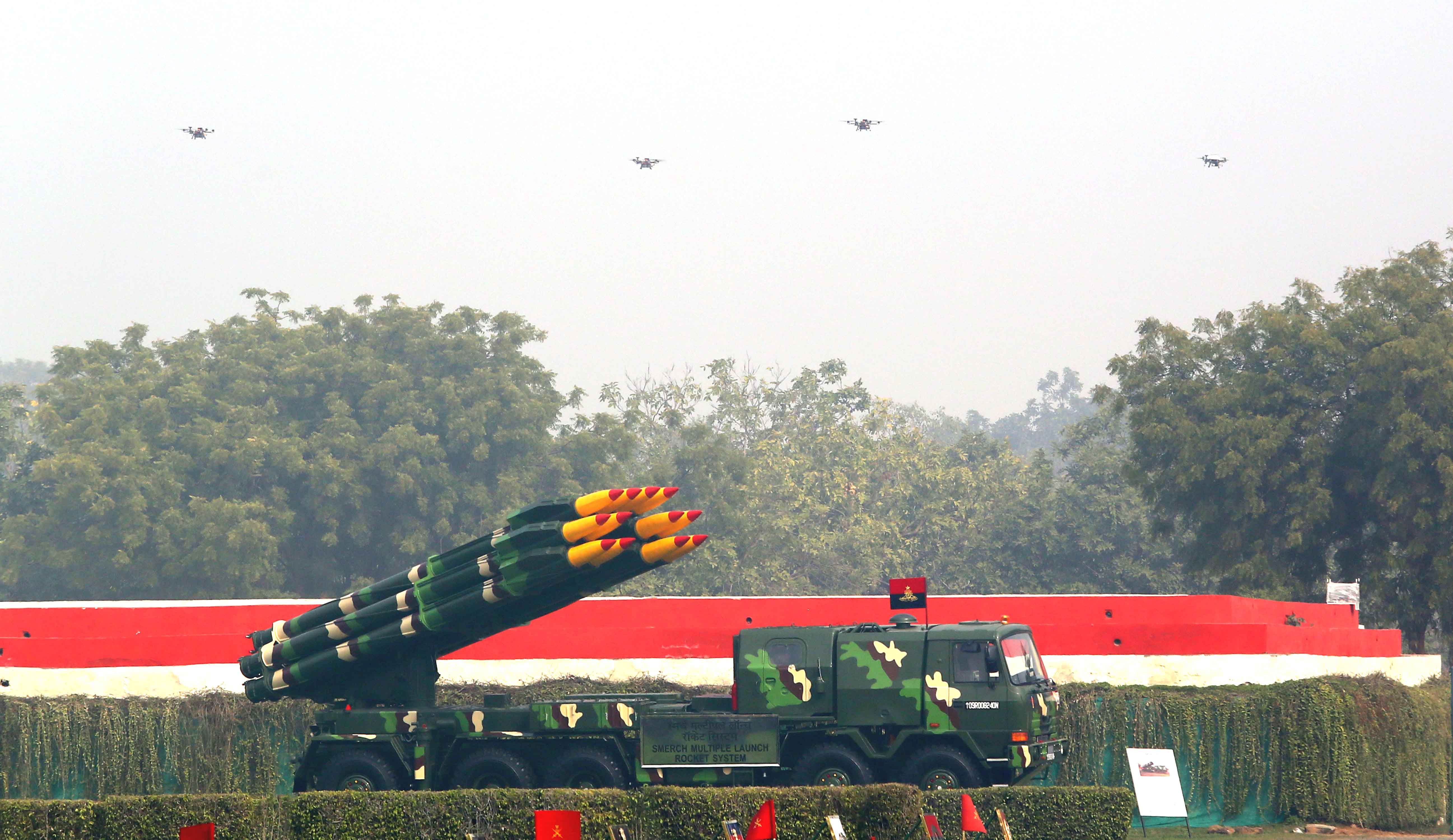
Sustainment becomes predictive: The mid-layer is designed to consume resources fast but smart. ML forecasts supply burn rates; drones, UGVs, and heliborne resupply plug gaps. This keeps the Spear moving without starving the Shield. The Scalpel demands little in logistics, but its precise effects multiply the value of every litre of fuel or shell delivered.
Electronic warfare resilience binds the system: Spectrum-hopping radios and redundant fire links mean the Scalpel can still lase and guide even under jamming; the Spear keeps shooting-and-scooting; the Shield maintains rear connectivity. It is not just kit—it is the layered grammar itself that ensures kill chains are never severed.
As RAND observed of NCW two decades ago, ‘The side that adapts faster to shocks sustains tempo; the other collapses under friction’ (RAND NCW Report, 2005). India’s new Scalpel-Spear-Shield construct is designed precisely for that: Special Forces as eyes and scalpel, the hybrid mid-layer as shock spear, and regulars as stabilising shield. Together, they turn time and cost into weapons India can finally wield.
Global Analogues
India’s emerging Scalpel-Spear-Shield grammar is not without precedent; in fact, it mirrors patterns already visible in other major militaries.
The United States (US) pioneered this layering. At the tip sits the scalpel of JSOC’s Tier-1 units—Delta Force, SEAL Team Six—designed for surgical raids and deep interdiction. Behind them lies the spear: the 75th Ranger Regiment and Marine Raiders, expeditionary formations that seize airheads, breach defences, and exploit shock. Finally, the shield is provided by armoured and infantry brigade combat teams, which bring staying power and mass.
The United Kingdom (UK) has long relied on a similar logic. The SAS and SBS serve as the scalpel, conducting reconnaissance and high-risk raids. The spear is embodied in the new Ranger Regiment and the 16 Air Assault Brigade, capable of rapid-entry operations. The heavy brigades of armour and mechanised infantry remain the shield, anchoring gains once the lighter forces have opened the door.
Israel has perhaps the most battle-tested example. Its scalpel is the Sayeret Matkal and Shayetet-13, striking deep or at sea. The spear comes through elite commando-light formations like Maglan, Egoz, and Duvdevan—built for rapid interdiction in rough terrain. The shield is the weight of Golani, Paratroopers, and armour brigades, which absorb counterattacks and hold ground.
Even China has adapted the model. PLA Special Operations Forces serve as the scalpel. Their medium combined-arms brigades—lighter, UAV- and EW-heavy—act as the spear. Heavy brigades, with armour and artillery mass, remain the shield.
What India is now experimenting with—Para/MARCOS/Garud/SFF as scalpel, Bhairav-Rudra-Shaktibaan as spear, and its regular divisions as shield—is not an anomaly. It is the convergence of a proven global logic, tailored to Indian geography and timelines: scalpel to shape, spear to shock, shield to hold.
Bottom Line
India’s enduring weakness was always time. ‘Hot starts’ that looked aggressive on paper inevitably cooled as lumbering formations took days or weeks to mass. By then, Pakistan had mobilised reserves, international pressure had mounted, and the initiative had slipped away.
The Bhairav-Rudra-Shaktibaan construct, fused with network-centric warfare and unmanned sustainment, is designed to turn that liability into a weapon. It weaponises time itself.
At the tactical level, the logic is simple but decisive: Bhairavs open the breach, Rudras drive the spear, Shaktibaans paralyse enemy guns, and the regular formations lock the shield in place. At the strategic level, this grammar generates rapid, precise, sub-threshold options—punishment without paralysis, deterrence without delay.
As General Bipin Rawat warned in his 2019 Army Day address, “Future wars will be short, sharp, and intense. We will not have the luxury of months. We must win in days” (https://pib.gov.in).
With the Scalpel of Special Forces, the Spear of Bhairav-Rudra-Shaktibaan, and the Shield of regular formations, India is finally assembling a way to fight—and win—on its own clock.
Subscribe To Force
Fuel Fearless Journalism with Your Yearly Subscription
SUBSCRIBE NOW
We don’t tell you how to do your job…
But we put the environment in which you do your job in perspective, so that when you step out you do so with the complete picture.


